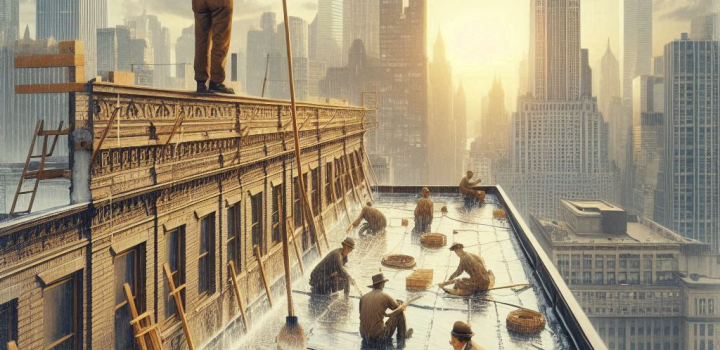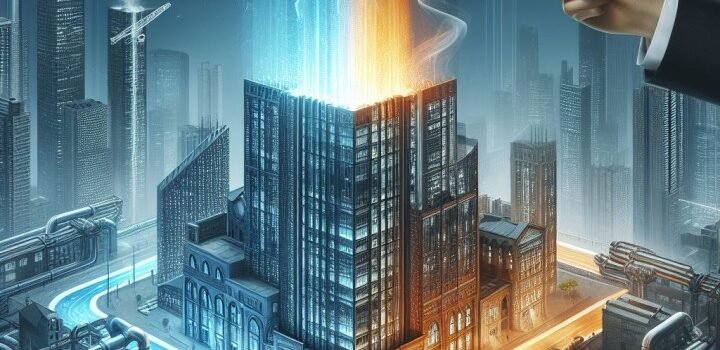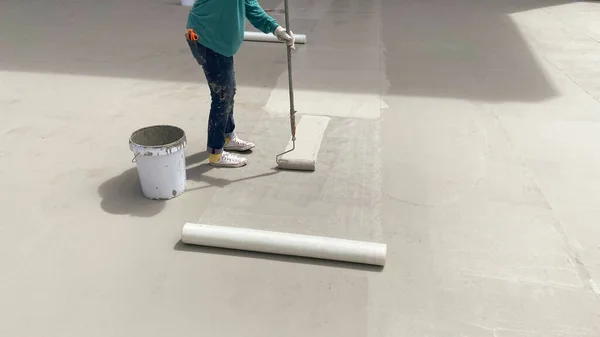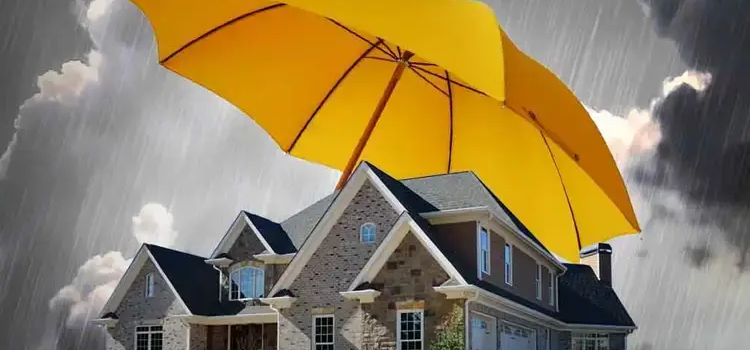Why Painting and Waterproofing Are Different? Yet Equally Essential?
Background and Scope
In modern construction and renovation, painting and waterproofing are omnipresent finishing operations. Paint changes surfaces visually—adding character, mood, and style—and waterproofing defends those same surfaces from moisture penetration, UV radiation, and weathering. While most people confuse these operations, they play very different functions: painting is largely visual, while waterproofing is inherently protective. Knowing these functions assists property owners, engineers, and contractors in maximizing beauty and longevity in their projects.
Basics of Paints and Waterproofing

What are Paints: Cosmetic Emphasis
A paint is largely a cosmetic coating placed on surfaces for the purpose of improving their beauty. Paints generally consist of pigments for color, binders for holding on to surfaces, solvents to give them fluidity, and additives for desired properties such as increased drying speed. While some paints do have some protection against UV or low levels of moisture, these are more than eclipsed by the protections that specialized waterproofing products can give.
Defining Waterproofing: Protective Imperative
Waterproofing is the pinnacle of structural integrity maintenance. Its main role is to seal or repel water from a substrate—most commonly concrete—and inhibit penetration that causes cracks, mold, and eventual structural collapse. High-performance materials such as polyurethane coatings inhibit UV damages to concrete and serve as a protective cover against leaks, cracks, and waterborne damages. By reflecting the sun, these coatings also decrease thermal stress on the substrate, offering dual functions against heat and rains.
Why Both Are Important in Contemporary Building
Painting and waterproofing have both become more important to architects and builders. Painting provides color and visual consistency, essential for brand recognition and occupant satisfaction. Waterproofing keeps the building stable and resistant to environmental assaults, such as UV rays that break down unprotected surfaces. Using both results in a balanced, high-stability building that withstands weather extremes while still having an attractive appearance.
A Brief History of Protective and Decorative Coatings
Evolution of Painting in Architecture
In the past, painting served an ornamental purpose: early civilizations applied natural pigments to decorate temples and monuments. Through the centuries, paint recipes developed to include chemicals and synthetic binders to increase colorfastness and durability. Modern architectural paints provide extensive color offerings, surface sheens, and special effects such as texture or metallic finishes, yet are mostly aesthetic.
Emergence of Waterproofing Solutions
Waterproofing, on the other hand, was always driven by functional need—from the bitumen applied to ancient Babylonian buildings to sophisticated polyurethane membranes. The early remedies such as tar or pitch were crude but effective at stopping water from entering foundations or roofs. Advanced chemical engineering has optimized these approaches to synthetic polymers (such as polyurethanes) that create durable layers able to both stop water and UV attacks directly onto concrete. In the past century, it has become apparent that painting and waterproofing share synergy, yet each has its own distinct orientation.
Key Distinctions Between Waterproofing and Painting
Chemical Composition and Goals
Paints consist mainly of pigments, binders (usually acrylic or latex for water-based paints), and additives providing sheen or drying characteristics. They are meant to add aesthetics, although there are specialty paints that provide fair resistance to UV or moisture.
Waterproofing products, by contrast, are resinously filled with elastomers, polymers (such as polyurethane), and dedicated fillers. They aim to form a physical or chemical barrier to water penetration. Some solutions also contain UV stabilizers that reflect or absorb damaging ultraviolet radiation—shielding the surface itself and the waterproof layer from photodegradation.
Performance Criteria: Beauty vs. Barrier
The performance of a paint is tested in terms of color retention, consistency, and its capacity to conceal defects. Waterproofing products, on the other hand, are tested for water resistance, flexibility, tensile strength, and reflectivity from UV. This highlights a fundamental difference in their operational purposes.
Durability Under UV Rays and Moisture
Plain exterior coatings do fade or chalk with the passage of time when they are exposed to direct UV radiation, particularly if they are not specially made. Although high-quality exterior paints do have UV-resistant additives, they rarely achieve the protective performance of polyurethane coatings that actively prevent water penetration and inhibit concrete degradation.
Common Application Areas

· Painting: Interior and exterior walls, trim, decorative surfaces, focus on getting a good finish.
· Waterproofing: Basements, foundations, terraces, bathrooms, or roofs—where structural integrity and avoiding leaks are most important. Polyurethane, in fact, finds widespread application on roofs to battle heat and rain at the same time.
Painting: The Aesthetic Coating
Role of Paints in Enhancing Appearance
Paint is the initial impression of any structure. Color, texture, and finish define the architectural aesthetic—modern simplicity or country quaintness. Interior paints are a matter of occupant taste, while exterior paints assist in blending buildings into their surroundings or corporate identity. While painting can cover minor imperfections, its greatest asset is visual change.
Selection Criteria: Pigments, Binders, and Sheen
1. Pigments: Supply color and coverage. High-quality pigments guarantee fade resistance when exposed to moderate UV radiation.
2. Binders: Generally acrylic or vinyl, binders control paint adhesion and film formation.
3. Sheen: Gloss, semi-gloss, or matte sheens produce varying aesthetic appearances and ease of cleaning.
In exterior use, the selection of UV-resistant paints will postpone fading. Such coatings, though, tend to remain less protective than dedicated polyurethane or elastomeric membranes in terms of water infiltration.
Paints Under UV Exposure
Ultraviolet light progressively degrades binders and destabilizes some pigments. Fading, chalking, and slight surface cracking are typical consequences. While numerous contemporary exterior paints include UV-protectant additives, they do not usually provide the significant infiltration barrier or reflection that polyurethane treatments deliver.
Maintenance and Recoating Cycles
Despite sophisticated formulations, paint must periodically be recoated—frequently every 3–5 years on exteriors, although this is weather, color, and quality dependent. Warmer temperatures speed up paint degradation, particularly under intense UV exposure. On-time recoating preserves a building’s visual appeal but doesn’t significantly deter or correct problems such as leaks or further structural cracking.
Waterproofing: The Protective Coating

Basic Significance of Waterproofing
Water entry weakens structural stability, causing cracks, mold, and corrosion of reinforcement. Waterproofing, therefore, is not only a discretionary finish but a necessity in engineering. An executed waterproofing system protects substrates—especially concrete—from UV and water attacks, directly safeguarding them for many years.
Threats: Ultra Violet Rays Damages to Concrete
Concrete is seen as robust, but UV light destroys some of the chemical bonds in its outer layers, particularly if there is no protective coating. The radiation of the sun can make micro-cracks or bleach any pigmented or aesthetic overlay. As soon as microscopic pathways become available, rain or seepage can speed up more severe structural damage.
Protection of Polyurethene Coating: A Barrier Against Leaks, Cracks, and Waterborne Damages
Polyurethane coatings are unrivaled among waterproofing coatings, owing to characteristics such as flexibility, elevated stability, and chemical resistance. Applied over a primed clean surface, polyurethane is a continuous film that spans over hairline fissures and impedes water intrusion. The high reflective index present in advanced polyurethane systems also helps to reflect UV light, thereby also serving as an insulating visible barrier. The synergy effectively:
· Isolates water from penetrating through micro-fissures.
· Protects the underlying concrete from solar radiation.
· Reduces thermal expansion due to severe sunlight.
Reflection of Sunlight and UV Rays by the Polyurethene Coating
One of the main innovations in current waterproofing is the addition of UV-reflective particles into the polyurethane matrix. This reflection:
· Reduces surface temperature on roofs or terraces, lowering thermal stress.
· Slows the rate of photo-degradation for the coating itself.
· Helps in energy savings by reducing heat absorption.
Multiple Use for Heat and Rains
In addition to repelling water, the reflective property of polyurethane makes it ideal for fending off excessive heat—a feature prevalent in summer. The two properties come in handy, particularly for rooftops or exposed terraces, where the coat withstands scorching sunshine and torrential rains, maintaining the functional integrity of the concrete.
Excellent Durability, High Stability, and High Reflective Index
The chemistry of polyurethane gives it a long service life, particularly if used correctly. Its elasticity allows for small structural movement without cracks in the membrane. Coupled with a high reflective index, it offers a multi-faceted solution that repels water and UV attacks directly to the substrate. Overall, polyurethane is a powerful waterproofing and protective solution that outshines painting in structural protection.
Interplay of Painting and Waterproofing in Construction
Layering Strategy: Protective First, Aesthetic Second
The best strategy is to apply waterproofing coatings initially—on new concrete or cleaned surfaces—and later paint or use decorative finishes. This protects the building from inside out.
· Example: A roof can be given a polyurethane waterproof membrane and then a UV-stable paint if color or certain design requirements are needed.
· Result: The design remains secure from penetration while still achieving the intended visual flair.
Complementary Roles in Building Endurance
Painting by itself provides very little protection against moisture, whereas a waterproof membrane by itself may not be aesthetically pleasing. Through their combination, owners benefit from both the visual appeal and substantial durability against the elements.
Bypassing Popular Misconceptions
A few think one application of waterproof paint is the answer to all infiltration problems. In practice, real effective waterproofing systems are often based on professional membranes or elastomeric coatings such as polyurethane. Typical decorative paints sold as “weatherproof” may suffice with light conditions but do not constitute effective protective means for heavy rainfall or high UV.
Conclusion
Painting and waterproofing share a common trait: they both involve applying a coating. Yet their aims and outcomes diverge sharply. Painting is about aesthetics—transforming surfaces with pleasing hues or creative finishes—while waterproofing is about protection, specifically against UV rays, moisture infiltration, and environmental degradation.
For concrete-constructed structures, or even others with substrates other than concrete, having a protective membrane—more so based on polyurethane—is the key to leakage, cracking, and other water-borne damage prevention. Having multiple functions to perform with regards to heat and rains, such coatings have remarkable durability, superior stability, and innovative features such as UV Rays reflection from the building surface. When blended judiciously with a decorative paint coating, structures realize both an aesthetically pleasing surface and a strong protection from environmental factors.
Summer is found to be the ideal season in which to install waterproofing measures because of the dryness and elevated temperatures favoring rapid curing and maximum adhesion. Alternatively, wet or cold conditions predispose to imperfect bonding or the entrapment of moisture behind the membrane.
In the end, painting and waterproofing are both critical components of contemporary construction. Knowing they are distinct means stakeholders apply the correct solution in the correct instance—beauty where beauty is wanted, protection where protection is required. Well-applied, they work in concert to maintain our built environment’s longevity, functionality, and appeal for decades to come.
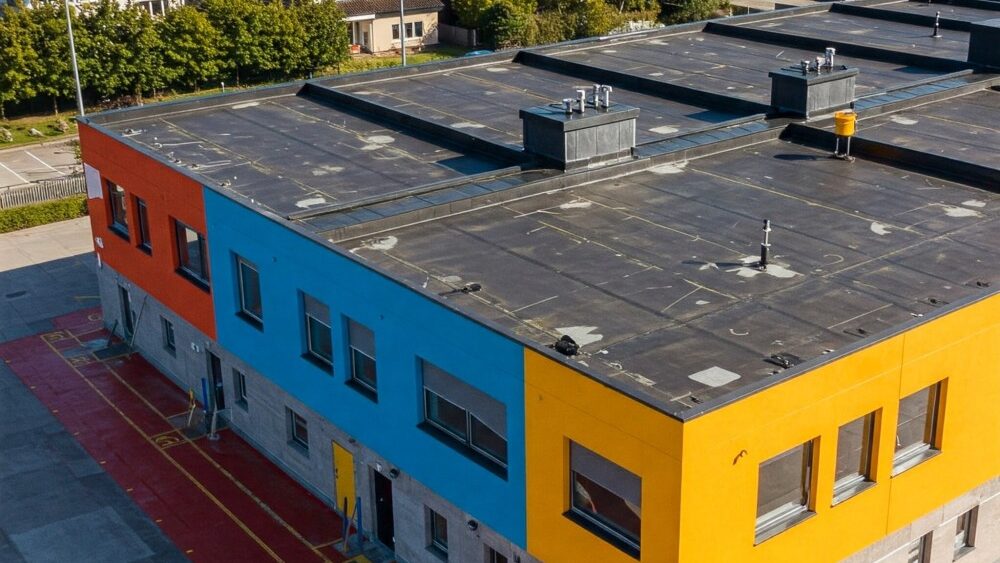
For more details give us a call now at +91-6235755755 or mail us at mail@banwet.com


